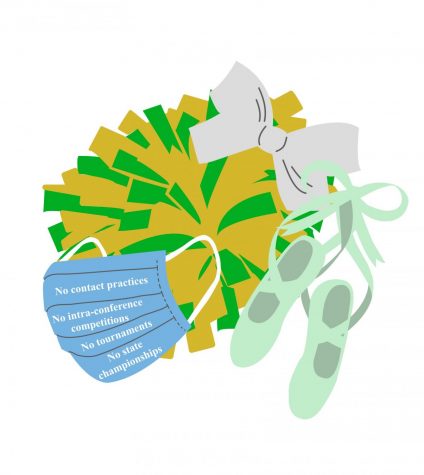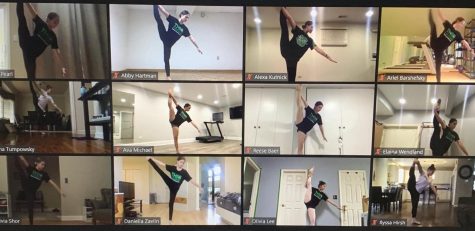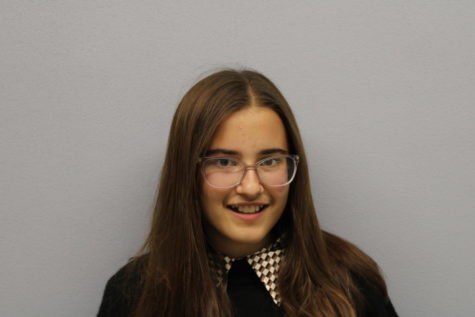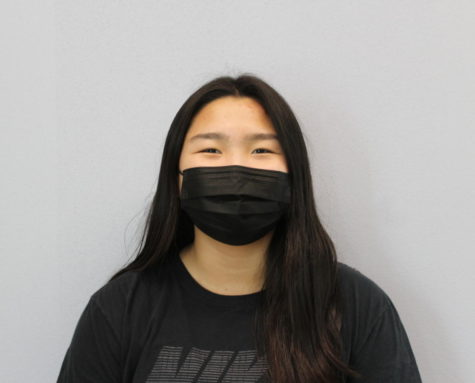Chants, Choreography & COVID
Stevenson cheerleaders, Patriettes, and dancers continue to practice both virtually and in-person, following COVID-19 guidelines.
Sprinting across the soccer fields, varsity cheerleader Abby Ruksakiati ’21 and her teammates perform intricate tumbling routines — anything from roundoff back handsprings to aerial cartwheels. But this season, they’re not rehearsing for their weekly appearances on the sidelines of Stevenson football games as they normally would.
Instead, the athletes focus on developing their individual skill sets while making sure to follow the strict COVID-19 parameters enforced by the IHSA. Since cheerleading is classified as a high risk sport by the Illinois Department of Health (IDPH), the official season was rescheduled to November through February.
Recently, however, the IHSA allotted two contact days per week for these riskier sports. Compared to their regular practice schedule of six days a week, cheerleaders like Ruksakiati feel a drastic difference yet remain optimistic. As a result of the IHSA’s postponement of all competitions and performances, Ruksakiati’s team devotes the majority of their practice time to growing as individuals.

“This team has already made tremendous improvement since our first in person practice and we have been having very productive practices,” Ruksakiati said. “Everyone on the team is taking advantage of the time we have together and it’s really motivating us to work harder and grow as individuals and as a team.”
Alongside cheerleading competitions, the Stevenson Winter Dance Concert that features co-curricular dance groups like Mélange was cancelled as well. Instead, it’s been adapted to an online setting with three events: site-specific solos, a live dance class taught by a professional instructor and recorded small group performances. This showcase will be compiled together by a professional videographer and will debut either the week before winter break or the week after.
Instructed by dance teacher Angela Dauphin, the Stevenson Mélange dancers hold their practices in-person and online multiple times throughout the week. When practicing in-person, they are required to wear face masks and stay within 8-foot squares — which Dauphin finds to be especially challenging.
“We have had to get very creative about utilizing space and making interesting choreography when limited to eight feet,” Dauphin said. “Choreography will look different than in the past because we cannot use all of our choreographic tools or physically interact.”
Nevertheless, Dauphin and her dancers — like Caroline Feng ’24 — continue to prepare for the concert. Feng records her choreography and rehearses remotely, paying close attention to pick up the subtleties of the movements. Visual and spatial mindfulness are among the difficulties of dancing virtually, she believes.
“In a way COVID-19 has made dance and choreographing harder [because] I have to be aware of space,” Feng said. “But it has also made me enjoy dance even more.”

Yet all of these virtual practices limit the interactions between teammates, making it difficult to host team-bonding activities — not only for the dancers, but the cheerleaders as well. These varsity athletes do their best to incorporate team bonding into their schedule, because forming social connections is not only essential for building community, Ruksakiati believes, but also for gaining support in this difficult time. One way the cheerleaders did this was hosting virtual practices during the summer.
“We had virtual practices over Zoom twice a week where we would get to know each other and start learning the basics and cheers like we would at an in-person practice,” Ruksakiati said. “These were great for meeting new people and also reconnecting with previous teammates during this difficult time.”
Although for some sports, like cheerleading, digital practices are a thing of the past, there are others that continue to be held virtually. Stevenson’s competitive dance team, the Patriettes, is one such sport that currently practices over Zoom. Head coach Kayla Fleming finds it challenging, as she is in charge of the freshmen team.

Fleming believes the hardest part for her team to adapt to is the lack of in-person connections with their teammates or classmates due to the fully remote environment. Typically, freshmen have ample opportunity to make new friends. However, with COVID-19 keeping this year’s class of freshmen at home, Fleming said their social lives are most negatively impacted.
To combat this, Fleming placed her athletes into small groups, or “families,” at the beginning of the summer training, in hopes of familiarizing everyone with their teammates. In addition to learning and perfecting the choreography, she incorporates team-building and mindfulness activities into each practice to simulate as much of the usual experience as possible.
“At the beginning of each practice, the athletes write a response to a journal question that I create and then they have the option of sharing their thoughts with their teammates,” Fleming said. “We also do a feelings check-in where the athletes draw a picture of how they are feeling and they can share details if they feel comfortable.”
Ruksakiati believes connecting with others truly makes a difference in team sports, and this is more essential now than ever after months of total isolation. Despite the restrictions on what’s allowed in-person, or the lack of physical practices for some, these athletes are making the most of their unique season.
“We are continuing to work hard and have a positive attitude,” Ruksakiati said. “Everyone is bonding and we are already feeling like a family which is very important to have during a team sport like cheerleading. It’s really helpful to have such a supportive team.”




Ken Ruksakiati | Nov 10, 2021 at 11:15 pm
Great article describing how young adults are coping with the unfortunate situation due to COVID-19.